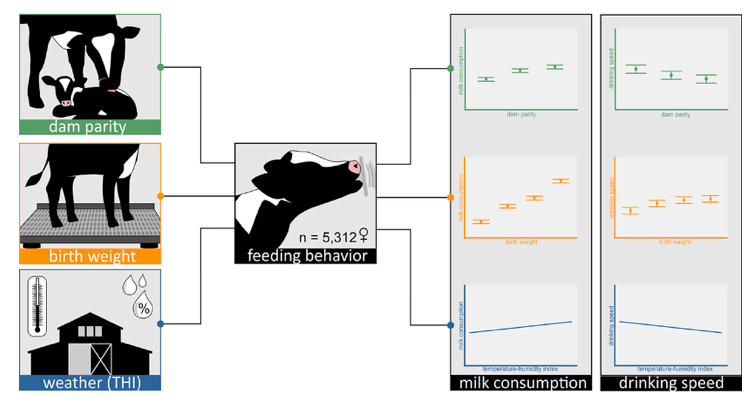Research Note
Calf to Heifer ASAP:
What an Automated Feeding System Reveals
With the U.S. heifer-to-milk cow ratio at the lowest point in more than 25 years, dairy producers want to speed calf growth without reducing replacement heifer quality. How to make it happen?
Research shows that high early age growth rate generally correlates with:
- Younger age at first calving
- Increased lifetime milk production
- Reduction in overall raising costs
Although numerous health, environment, and other factors influence calf growth rate, nutrition is key, so accelerated feeding programs (AFP) usually target increasing body weight (BW) through greater intake of higher protein diets.
While a conventional feeding program provides a calf milk or milk replacer at around 10% of BW, AFP allow the calf to consume greater amounts in the preweaning phase with more protein in the milk replacer (up to 30% CP). Commercial scale AFP depend on automated feeding systems that identify each calf and provide data on her feeding behavior.

“However,” says Purdue’s Dr. Jackie Boerman, “there’s a challenge relating the huge amount of feeding data generated by AFP to other key factors that impact calf-to-heifer growth.
“Health status — particularly respiratory disease incidence — is chief among these factors. And variation in individual milk consumption from autofeeders helps to reveal it.”
Boerman pointed to a recent study that used data covering several years on a single northern Indiana farm with eight calf autofeeders in order to generate predictive equations for future BW of heifers. The researchers reported a 263-kg difference in predicted BW at 400 days from the lightest to the heaviest heifer present in the data set. Disease incidence and other variables collected during the first 60 days of life accounted for over 30% of the difference in BW up to 400 days of age.
Using data from the same farm, another study reported that increased treatment for respiratory disease from 61 to 120 days significantly reduced heifer survivability to first lactation as well as chance of pregnancy. Calf and heifer growth data also helped predict first lactation performance.

Boerman notes that calf autofeeder data also can tie into other real-time datasets that may be available on farm — for example, temperature-humidity index (THI) –as in a 2023 study.
“Keeping in mind that each farm generates a unique data set,” Boerman says, “we can use the farm’s calf autofeeder data early on to identify those animals most likely to thrive, and to help group them for their greatest possible milk output.”
Questions?
Email FeedInsight 4U

